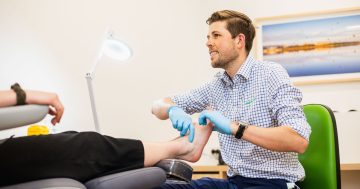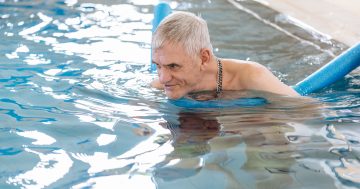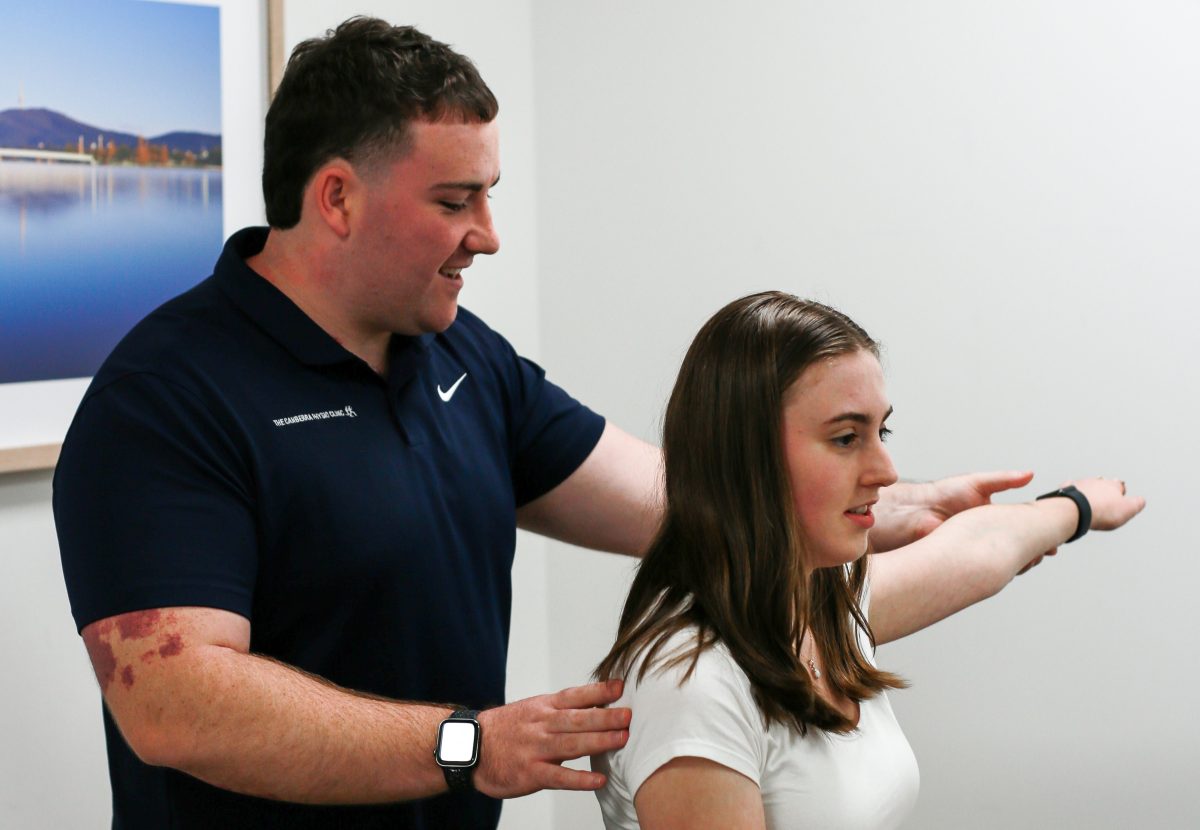
Canberra Physio Clinic physiotherapist Dom Malouf says a multidisciplinary approach to pain and injury management almost always leads to better outcomes. Photo: The Walking Clinic.
The leg bone’s connected to the knee bone, the knee bone’s connected to the thigh bone … but catchy as these lyrics are, these connections are easily forgotten when tackling pain or injury unless you have a podiatrist, a physiotherapist and an exercise physiologist (EP) all looking at the problem.
Canberra Physio Clinic physiotherapist Dom Malouf says that’s precisely why he shares a roof with EPs and podiatrists.
“We all look at a problem through a slightly different lens, and having that multidisciplinary approach almost always leads to better outcomes for our clients,” he says.
“If a client comes in with pain in the lower limbs – the foot, knees, back, hips, etc – I often look into getting a podiatrist involved, and EPs can be a great help for people who wish to remain active while dealing with pain and injury.
“Having all these experts in-house makes it easy to ask each other questions and get a more complete picture.”
Canberra Physio Clinic EP Thea O’Donnell says it’s not hard to see how exercise physiology complements physiotherapy.
Simply put, an EP is well-placed to take over once a physiotherapist has addressed the acute injury and the client is looking to return to sport or work.
“I am looking at the body more holistically, rather than at a specific complaint. The goal is to get them back to where they were pre-injury,” she says.
“My clients’ goals vary from helping a patient regain balanced strength in both legs after one has been out of commission, or to return to a particular exercise they love like running, or for a regime that will help with the long-term management of things like back pain.
“On the other hand, if a client of mine is experiencing pain in a specific area, I might refer them to a physio to get a diagnosis.”
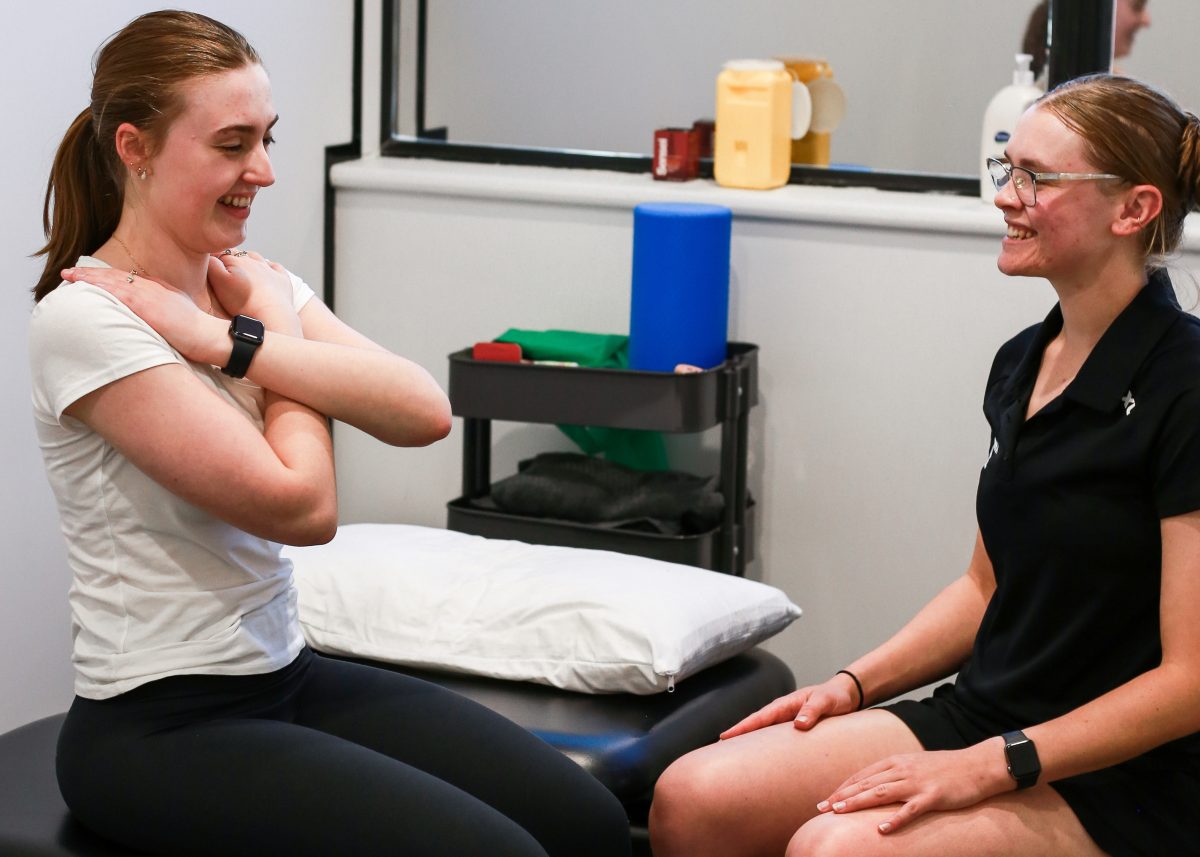
Exercise physiologist Thea O’Donnell looks at the body holistically. Photo: The Walking Clinic.
Working across the way from Canberra Physio Clinic is The Walking Clinic podiatrist Laura Kim.
Though for obvious reasons, podiatry is limited to treatments for lower limbs – mostly foot complaints – it’s not all ingrown toenails and plantar fasciitis. There are many other contexts in which a podiatrist might be called in to aid treatment for pain presenting in other parts of the body.
“We look at the biomechanical aspects of the lower limbs – hip, knees and feet. They’re all connected, and it’s all about optimising functional outcomes,” she says.
“A physiotherapist and a podiatrist will often refer to each other to look at hip or knee problems and ask each other questions. For instance, if hip pain is found to be associated with a person’s gait, a physio might call on a podiatrist to assess and manage the biomechanical function.”
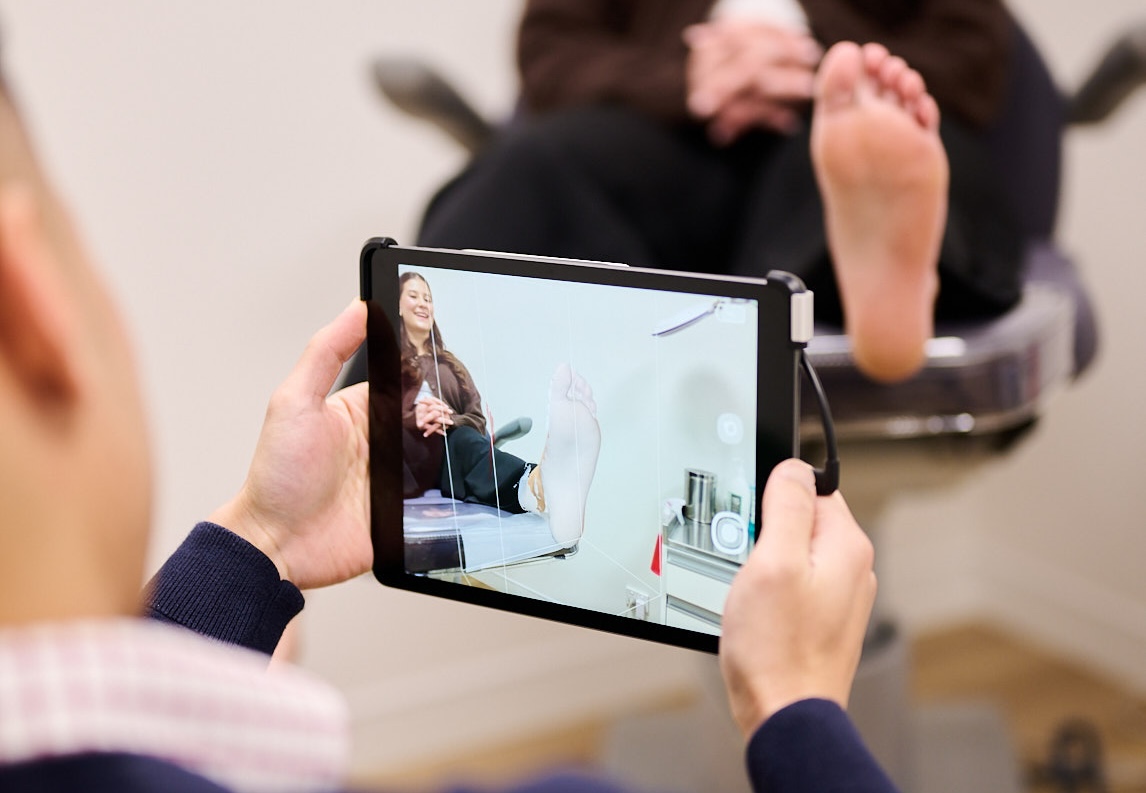
Walking Clinic podiatrist Laura Kim looks at the biomechanical aspects of the lower limbs. Photo: The Walking Clinic.
Diabetes is another example highlighting the unexpected connection between these disciplines.
Podiatrists are also often called in to help people with diabetes who can suffer from peripheral neuropathy (weakness, numbness and pain from nerve damage, usually in the hands and feet).
“I may then refer that client to an EP because exercise is a good way of managing weight, blood sugars and other things associated with Type 2 diabetes,” Laura says.
“Being in the same building makes it convenient for clients who need to tackle a problem from multiple angles.”
For more information, contact The Walking Clinic or The Canberra Physio Clinic.












